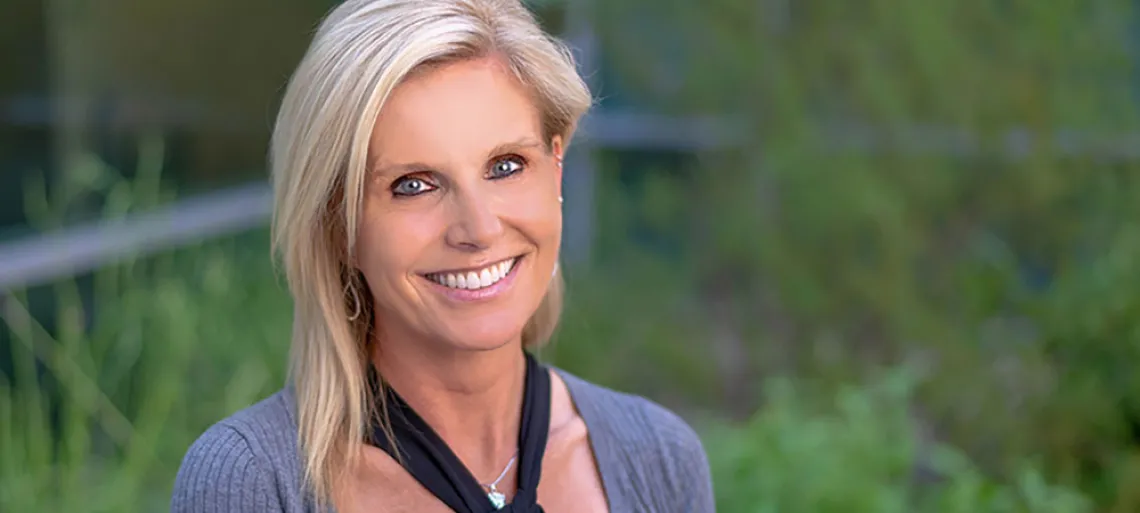Building a Brand Presence

Perhaps it is not obvious, but the majority of us are actively and directly involved in managing and promoting brands, says UA marketing expert Hope Jensen Schau.
And, quite often, the way our perceptions are shaped – whether they are about a movie, an athletics team, a restaurant or a higher education institution – does not occur on an individual basis. Most often, it is a shared, collective experience, said Schau, who shared her research and market insights during the UA's Social Media Summer Series organized by Human Resources.
Schau and other social media experts are working to inform UA employees about how to best use and harness the power of social media.
"We live in a branded world," said Schau, associate professor of marketing, associate dean of MBA programs, and the Gary M. Munsinger Chair in Entrepreneurship and Innovation at the UA's Eller College of Management. "People are perpetually consuming something. All of us are branded and institutional in all of our aspects."
Think about it: When have you shared the pros and cons about a restaurant experience? When have you asked a friend to recommend a service or salon? Or, how often do you pin products on Pinterest or submit reviews on Yelp?
Each of us are "at the center of swirling networks" of great importance and influence in the greater marketplace, Schau said.
What does that mean for UA employees, like those in marketing and communications, who are working to tell the UA's story?
"Over time, the brand becomes a promise of the value you are adding to the marketplace. You want people talking about your brand and the value it offers because you want to optimize your brand image," she said.
Kimberly Davis, the social media manager for University Relations, says the UA has a total social media audience of about 460,000 people, which includes followers via Twitter, Instagram, Facebook, LinkedIn and other platforms.
"With that number, we are always looking for new ways to reach the most captivated audience for the stories and branded content that we publish," Davis said.
But it is first important to understand consumer-driven perceptions, behaviors, expectations and influences, and also to recognize the importance of protecting the brand – whether it be the organization's name, design or symbol.
Based on some of her own co-authored research and select industry and academic research about consumer behaviors and influence, Schau shared that consumers:
- Want to be told stories
- In online forums, use brands to communicate who they are to people when they are not present
- Generate brand meaning
- Are able to produce messaging that is more impactful than messaging promoted by a corporation or organization
- Can collectively produce value not derived from the corporation or organization
"Some may be thinking, 'I'm not in a position that is responsible for that piece of the organization" but that is not true, Schau said. "All of us at the UA are involved, either in our jobs or through our passions, and have brands that we want to tell stories about."
Ultimately, Schau's take-home message is: "People do not just buy into a brand, they believe in stories. Go tell your story."
Schau said that through the sharing of stories, consumers are able to cultivate meaning and special connections with an organization and its brand.
To cultivate connections, it is important not to rely on a single platform for storytelling, she said, adding that effective marketing is "like a Rubik's Cube." It is multifaceted and ever-changing. And you need a strong strategy to handle it effectively.
Schau cited research indicating that Facebook, the world's largest social network, is ideal for creating awareness. While Facebook is especially useful for those brands that are just being built, she suggests that all brands have a Facebook presence.
“Twitter has been evolving into a news aggregator site," Schau noted. It is not the place to tell a full story, she said, but it is a strong tool for reaching out to individuals with influence and developing relationships with others.
Have a quick message you are trying to promote? Consider Instagram.
The UA is engaging its audience in a more informal way on Instagram, Davis said. "The best part is having the opportunity to crowd source some of the content we use by sharing our fans' photos. Who better to tell the story of UA than the people who are living it?"
And are you looking to attract the attention of, or share information with, a sizable pool? Try LinkedIn.
Davis notes that Linkedin is a strong avenue for reaching alumni and business community members, and that they tend to be interested in learning about UA research, traditions and achievements.
"This is an older and professionally established audience, and we communicate with them in a formal manner," Davis said.
"I feel the most important thing to remember when engaging with people as a brand on social media is the platforms were designed for people," Davis said. "To remain human, and personify your brand as a community, builds the best relationship with your audience. This is important for personal branding, too."

